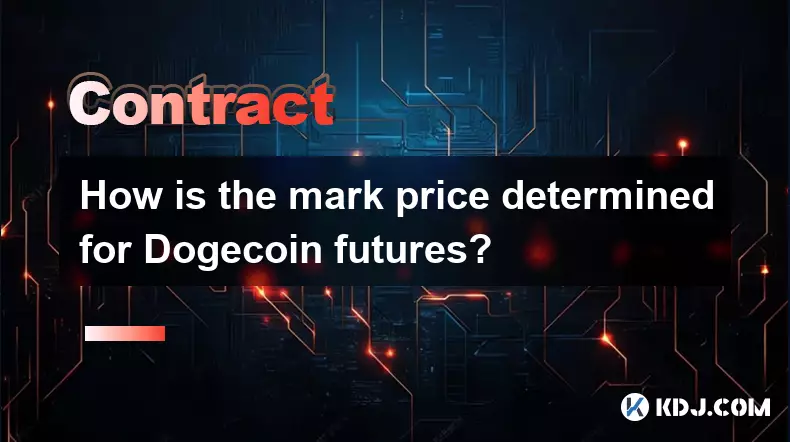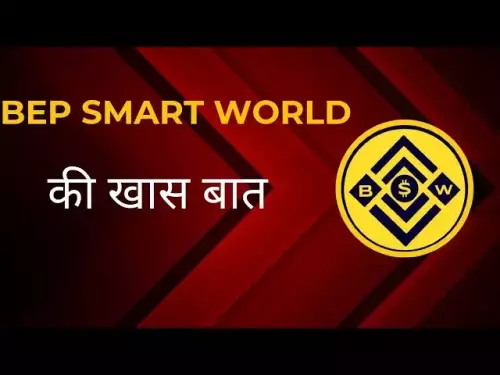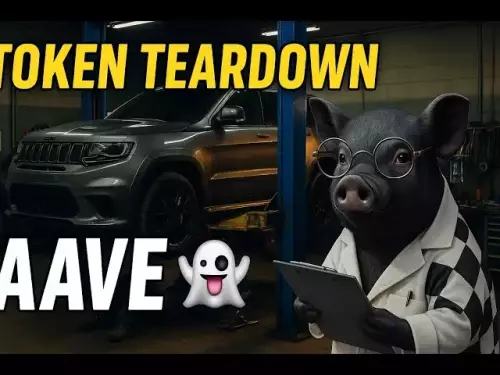-
 bitcoin
bitcoin $112195.049338 USD
2.42% -
 ethereum
ethereum $4124.915858 USD
2.81% -
 tether
tether $1.000570 USD
0.02% -
 xrp
xrp $2.861568 USD
2.25% -
 bnb
bnb $1000.346670 USD
3.04% -
 solana
solana $209.070819 USD
3.38% -
 usd-coin
usd-coin $0.999870 USD
0.02% -
 dogecoin
dogecoin $0.235379 USD
2.65% -
 tron
tron $0.335681 USD
-0.20% -
 cardano
cardano $0.803501 USD
3.38% -
 hyperliquid
hyperliquid $47.120881 USD
3.56% -
 chainlink
chainlink $21.501300 USD
3.44% -
 ethena-usde
ethena-usde $1.000571 USD
0.02% -
 avalanche
avalanche $29.793378 USD
3.62% -
 stellar
stellar $0.366964 USD
2.42%
How is the mark price determined for Dogecoin futures?
The Dogecoin futures mark price uses spot data from major exchanges, smoothed via TWAP/VWAP, to ensure fair valuation and prevent manipulation during volatility.
Sep 28, 2025 at 01:01 pm

Understanding the Concept of Mark Price in Dogecoin Futures
1. The mark price for Dogecoin futures is designed to reflect a fair and accurate valuation of the asset, preventing manipulation during periods of high volatility. Unlike the last traded price, which can be influenced by sudden spikes or drops, the mark price uses external data sources to establish stability.
2. Exchanges typically derive the mark price by referencing the spot price of Dogecoin from multiple reliable and liquid markets. These sources often include major cryptocurrency exchanges such as Binance, Coinbase, and Kraken, ensuring that the data is representative of true market conditions.
3. A time-weighted average price (TWAP) or volume-weighted average price (VWAP) may be applied to these spot prices to smooth out short-term anomalies. This prevents flash crashes or pumps on a single exchange from distorting the overall value used for futures contracts.
4. The frequency of updates varies by platform, but most leading derivatives exchanges refresh the mark price every few seconds. This ensures continuous alignment with real-time market dynamics without introducing lag that could affect risk management systems.
5. By anchoring the mark price to external benchmarks, trading platforms reduce the likelihood of unfair liquidations and enhance transparency for traders holding Dogecoin futures positions.
Role of Funding Rates in Stabilizing the Mark Price
1. Funding rates play a crucial role in aligning the futures price with the mark price over time. In perpetual Dogecoin futures contracts, periodic payments are exchanged between long and short holders based on the gap between the contract’s market price and the mark price.
2. When the futures price trades above the mark price, funding rates turn positive, meaning longs pay shorts. This incentivizes traders to open short positions or close longs, pushing the market price downward toward equilibrium.
3. Conversely, if the futures price falls below the mark price, funding becomes negative, with shorts paying longs. This encourages buying pressure, helping lift the contract value back in line with the underlying spot-based reference.
4. These mechanisms ensure that speculative imbalances do not persist indefinitely, maintaining a tighter relationship between derivative instruments and the actual Dogecoin spot market.
5. Because funding rates are calculated using the difference between two prices—one derived from spot data (mark price) and one from order book activity (last traded price)—they act as a feedback loop that reinforces pricing integrity.
Impact of Exchange-Specific Models on Dogecoin Valuation
1. Different derivatives exchanges implement unique methodologies for calculating the mark price. For example, some platforms use a simple average of top-tier exchange spot prices, while others apply filters to exclude outliers or low-volume trades.
2. Certain exchanges incorporate insurance fund levels and open interest trends into their mark price algorithms to anticipate systemic risks. This adds an additional layer of protection against cascading liquidations during extreme market moves.
3. Platforms like Bybit and OKX utilize what they call a 'fair price' mechanism, where the mark price serves as the basis for determining unrealized profit and loss, as well as liquidation thresholds.
4. Discrepancies in calculation methods can lead to slight variations in mark price across exchanges, even when referencing the same underlying asset. Traders must remain aware of these differences when managing cross-platform strategies.
5. Transparency reports published by exchanges often detail the exact composition of their mark price feeds, including weighting schemes and data source hierarchies, allowing sophisticated users to model potential deviations.
Frequently Asked Questions
What data sources are commonly used to calculate the Dogecoin mark price?Major cryptocurrency exchanges such as Binance, Coinbase Pro, Kraken, and Bitstamp are frequently included in the basket of spot price sources. The selection prioritizes platforms with high liquidity, strong security records, and consistent uptime to ensure reliability.
Why doesn't the mark price match the current trading price of Dogecoin futures?The mark price is not meant to track the immediate trading price but rather provide a stable benchmark based on spot market values. The actual futures price fluctuates due to supply and demand within the contract market, while the mark price resists short-term noise.
How often is the Dogecoin futures mark price updated?Most platforms update the mark price every 5 to 10 seconds. High-frequency updates allow risk engines to respond quickly to changing conditions while avoiding instability caused by overly rapid recalculations.
Can the mark price trigger automatic liquidations?Yes, the mark price is commonly used to determine liquidation levels for positions. If the mark price reaches a threshold where collateral is insufficient, the position will be automatically closed, regardless of the last traded price on the order book.
Disclaimer:info@kdj.com
The information provided is not trading advice. kdj.com does not assume any responsibility for any investments made based on the information provided in this article. Cryptocurrencies are highly volatile and it is highly recommended that you invest with caution after thorough research!
If you believe that the content used on this website infringes your copyright, please contact us immediately (info@kdj.com) and we will delete it promptly.
- Ethereum's Price Dance: Will Crypto Rallies Keep the Music Playing?
- 2025-09-29 08:25:12
- Crypto Staking Spotlight: BlockDAG's Referral Revolution Outshines Avalanche & Meme Coin Hype
- 2025-09-29 08:45:16
- BlockDAG, SUI, Chainlink: Navigating the Crypto Landscape in 2025
- 2025-09-29 08:25:12
- XRP Price Gears Up: Breakout Signals and What to Watch
- 2025-09-29 08:30:01
- Bitcoin, Gold, and Digital Assets: Navigating the New Financial Frontier
- 2025-09-29 08:45:16
- UN Embraces Blockchain: A Pension Fund Success Story and a Glimpse into the Future
- 2025-09-29 08:50:01
Related knowledge

How do I use the scheduled order feature in Cardano (ADA) contracts?
Sep 28,2025 at 10:18pm
Understanding Scheduled Orders in Cardano Smart ContractsCardano operates on a proof-of-stakes consensus mechanism and uses the Plutus scripting langu...

How do I enable the "scalping-only" mode for Cardano (ADA) contracts?
Sep 24,2025 at 03:19am
Understanding Scalping Strategies in Crypto Derivatives1. Scalping in cryptocurrency trading refers to executing multiple short-term trades within min...

What is the settlement time for Cardano (ADA) contracts?
Sep 28,2025 at 04:18am
Understanding Cardano's Contract Settlement Mechanism1. Cardano operates on a proof-of-stake consensus model known as Ouroboros, which fundamentally i...

How do I add margin to Cardano (ADA) contracts?
Sep 27,2025 at 07:54pm
Understanding Margin in Cardano (ADA) Smart ContractsCardano operates on a proof-of-stake blockchain that supports smart contracts through its Plutus ...

What is the maximum position limit for Cardano (ADA) contracts?
Sep 23,2025 at 11:00pm
Understanding ADA Futures and Derivatives Market Structure1. Cardano (ADA) futures contracts are offered by several major cryptocurrency derivatives e...

What is the maker fee for Cardano (ADA) contracts?
Sep 26,2025 at 09:01am
Understanding Maker Fees in Cardano (ADA) Contracts1. The concept of maker fees applies broadly across decentralized exchanges and smart contract plat...

How do I use the scheduled order feature in Cardano (ADA) contracts?
Sep 28,2025 at 10:18pm
Understanding Scheduled Orders in Cardano Smart ContractsCardano operates on a proof-of-stakes consensus mechanism and uses the Plutus scripting langu...

How do I enable the "scalping-only" mode for Cardano (ADA) contracts?
Sep 24,2025 at 03:19am
Understanding Scalping Strategies in Crypto Derivatives1. Scalping in cryptocurrency trading refers to executing multiple short-term trades within min...

What is the settlement time for Cardano (ADA) contracts?
Sep 28,2025 at 04:18am
Understanding Cardano's Contract Settlement Mechanism1. Cardano operates on a proof-of-stake consensus model known as Ouroboros, which fundamentally i...

How do I add margin to Cardano (ADA) contracts?
Sep 27,2025 at 07:54pm
Understanding Margin in Cardano (ADA) Smart ContractsCardano operates on a proof-of-stake blockchain that supports smart contracts through its Plutus ...

What is the maximum position limit for Cardano (ADA) contracts?
Sep 23,2025 at 11:00pm
Understanding ADA Futures and Derivatives Market Structure1. Cardano (ADA) futures contracts are offered by several major cryptocurrency derivatives e...

What is the maker fee for Cardano (ADA) contracts?
Sep 26,2025 at 09:01am
Understanding Maker Fees in Cardano (ADA) Contracts1. The concept of maker fees applies broadly across decentralized exchanges and smart contract plat...
See all articles










































































